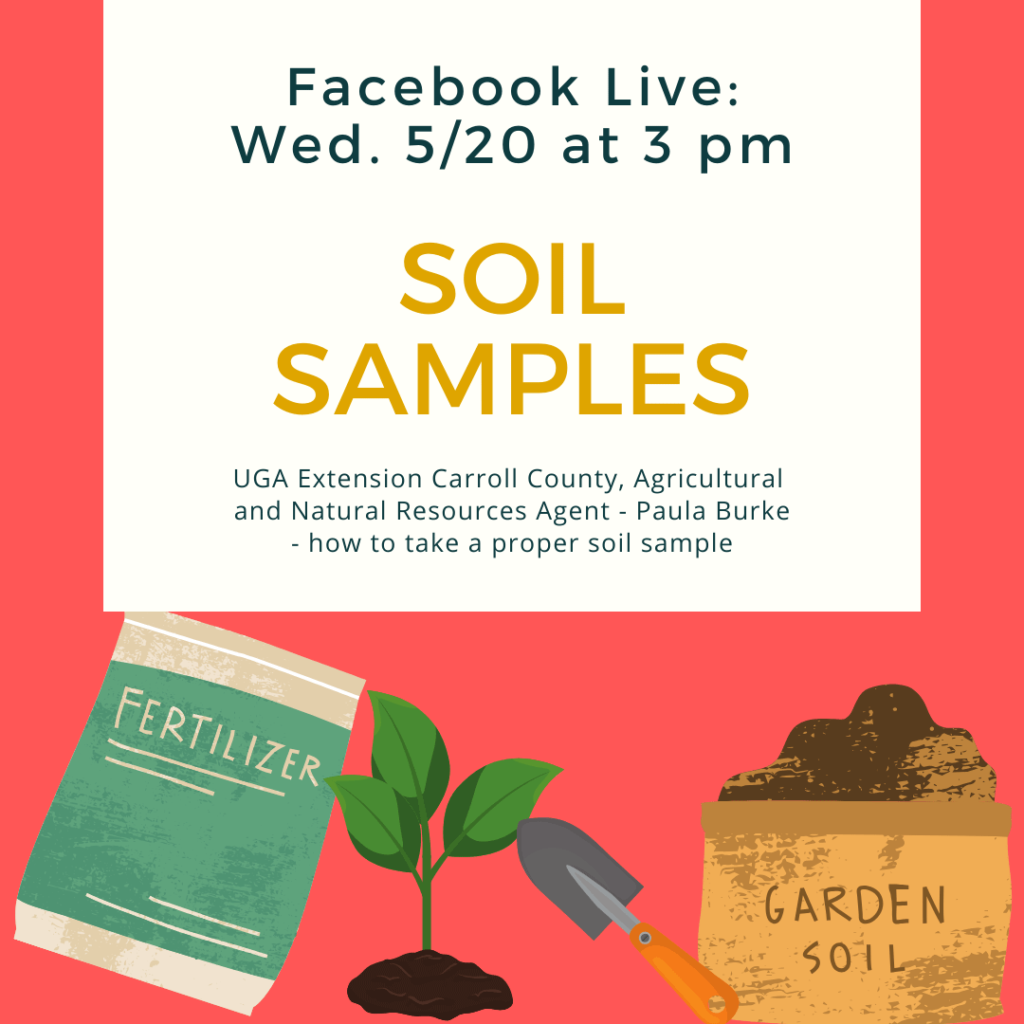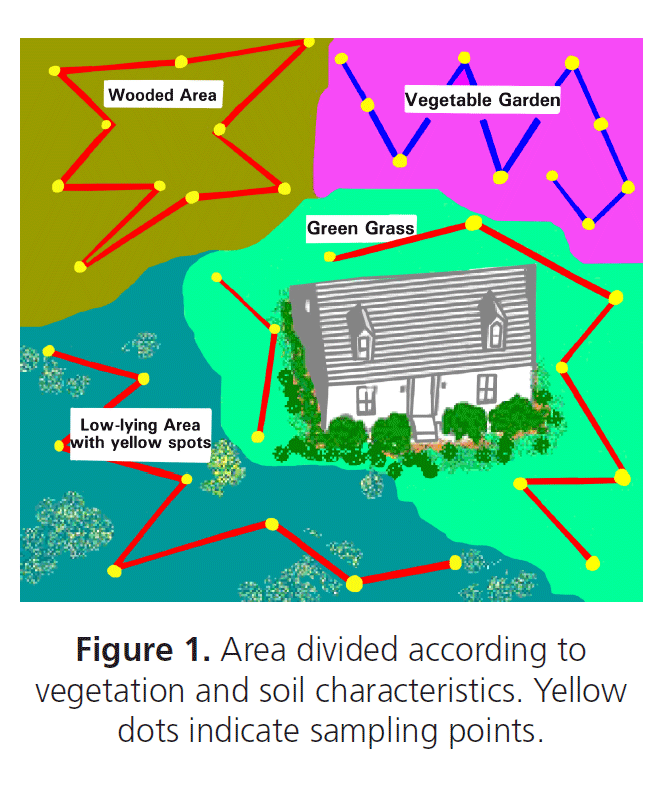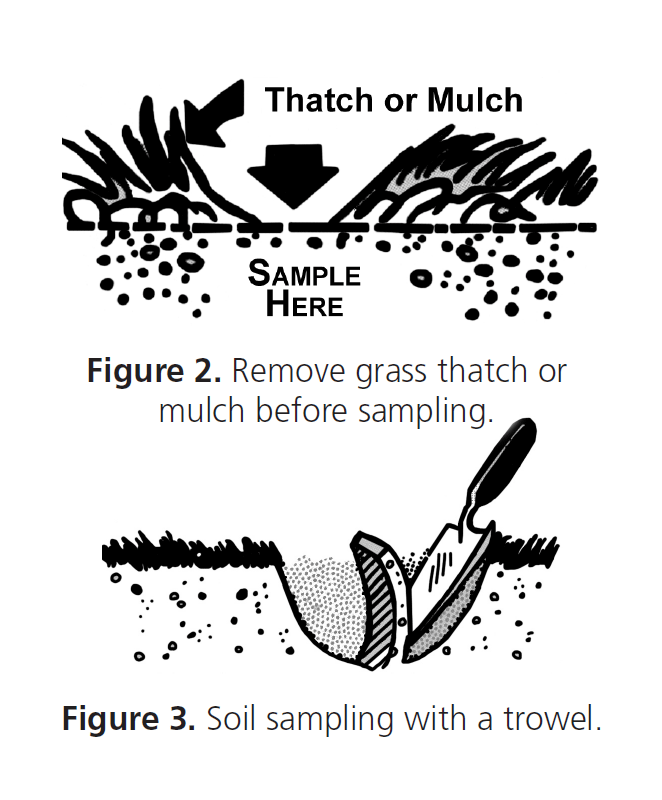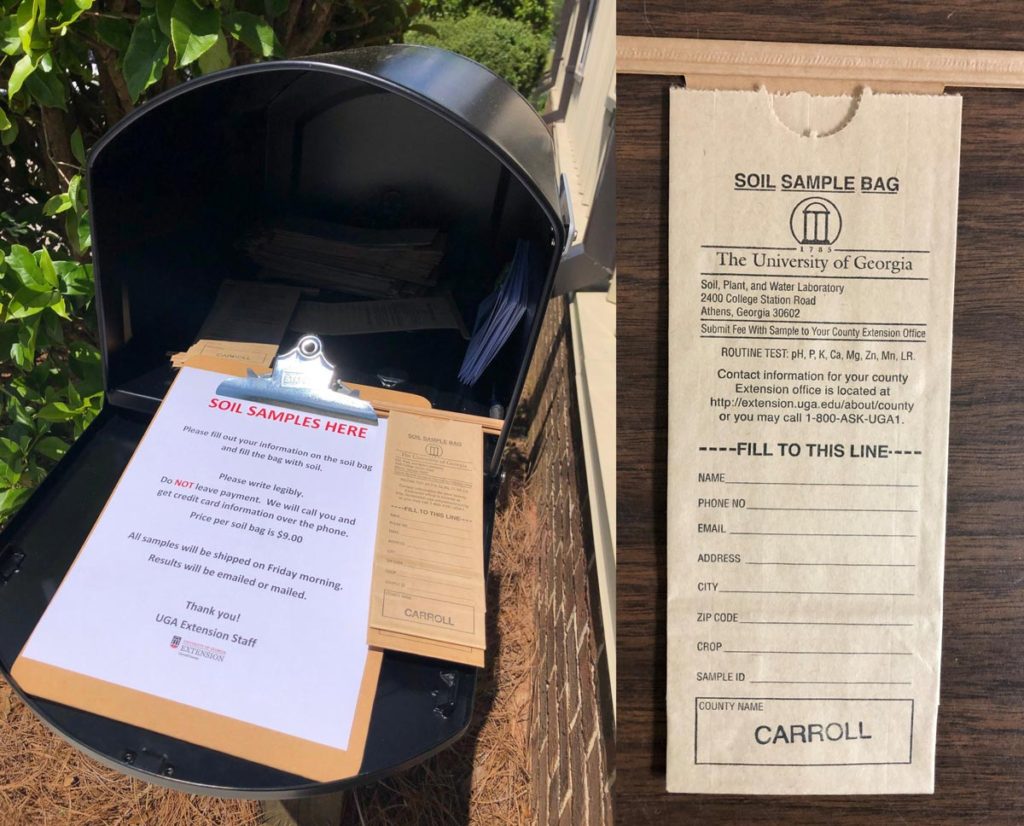
From UGA Extension Office: Developing and maintaining productive soils begin with soil testing. Soil tests provide information on the soil’s actual nutrient status. Test results are used to determine the amount and kind of nutrients that should be added for the best growth of lawn, garden, and other types of plants.
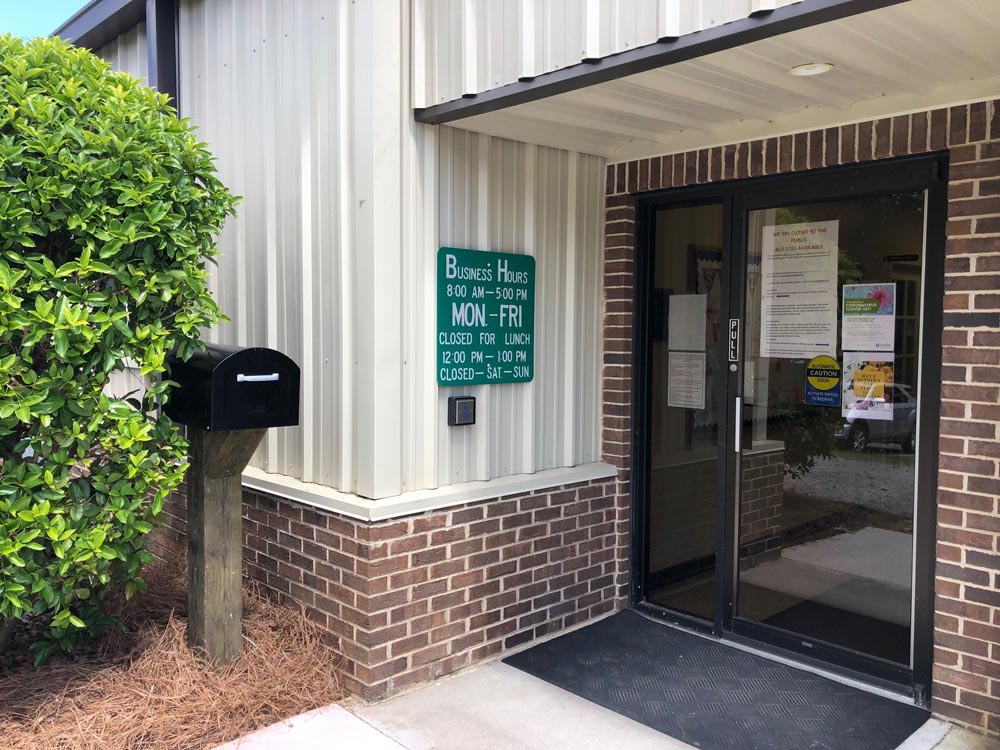
Testing your soil is easy! The UGA Extension at Carroll County AG Center, located at 900 Newnan Road, Carrollton, Georgia, now has a permanent dropbox just off the main office entrance. This feature was added during Covid19 closure but became a permanent feature for those who wish to drop off soil samples after hours and on weekends.
Photos: UGA Extension Carroll County
Steps in Soil Sampling
Content from UGA Extension Soil Sampling Brochure
Recommendations about when and how to apply nutrients are only as good as the soil sample submitted for analysis. To obtain a representative soil sample, the following steps are useful: identify sampling locations (zones), determine the sampling depths, use the right sampling tools, sample at the right time, and handle the samples accordingly.
1.) Sampling Locations
Map out the area where the plants are to be grown or are presently growing. This will help in record keeping and ensure that the soil is taken from throughout the entire area.
Divide the area such that each soil sample represents one plant type or condition. An area that has been divided according to obvious differences in plant types, plant performance, soil types, and drainage is shown in Figure 1.
• Use a zigzag approach when taking samples. Collect 8-10 soil samples from each location (zone) as shown in Figure 1.
• For trees and shrubs, take soil samples from six to eight spots around the drip-line of the plants.
2.) Sampling Depth
The depth of sampling depends on the type of plants being grown.
- For lawns, sample to a depth of 4 inches.
- For gardens, ornamentals, mixed fruit trees, and wildlife plots, sample to a depth of 6 inches.
3.) Sampling Time
Soil sampling should be done well in advance of planting or spring green-up. This allows adequate time for sample analysis, data interpretation, and fertilizer and lime application.
4.) Sampling Tools
Use clean sampling tools and containers to avoid contaminating the soil sample. Never use tools or containers that have been used for fertilizer or lime. Collect samples with tools like trowels, shovels, spades, hand probes or hand augers.
5.) Sampling Procedures
Clear the ground surface of grass thatch or mulch (Figure 2). Using a trowel, push the tool to the desired depth into the soil. Push the handle forward, with the spade still in the soil to make a wide opening. Then, as shown in Figure 3, cut a thin slice from the side of the opening that is of uniform thickness, approximately 1/4-inch thick and 2 inches in width, extending from the top of the ground to the depth of the cut. Collect from several locations.
Combine and mix them in a plastic bucket to avoid metal contamination. Take about a pint of the mixed soil and place it the UGA soil sample bag. Be sure to identify the sample clearly on the bag and the submission form before mailing.
7.) Sample Handling
Samples should be air-dried overnight. Dry samples on a flat surface lined with clean white paper. Take care to avoid contamination. After drying, transfer the sample to the soil sample bag and bring it to your local extension office. Your extension office will send samples to The Soil, Plant and Water Lab at the University of Georgia.
- Bring your dried sample to the Ag Center.
- Pick up a sample bag from the drop off box and fill in the information on the front. Please write legibly or print, so the Extension Office can reach you.
- Make sure you write down the crop you plan on growing. The soil sample report will make specific recommendations on adjusting PH and fertilizer needs. Be specific – “vegetable garden” is too broad of a term – “cabbage patch and tomatoes” are a better description as you may get different recommendations for different growing needs.
- Transfer the soil into the sample bag – pay attention to the fill line.
- Do not leave money or checks. The AG Center will contact you when processing your information and you can pay over the phone.
Frequently Asked Questions
Q: When and how often should soils be tested?
A: Soils can be tested any time during the year. However, allow enough time for the analysis and for fertilizer and lime application. Lime reacts slowly and, if possible, it should be mixed with the soil two to three months before planting. Generally, fall is the most desirable time to sample because landscapes and gardens are usually dry and easily accessible.
Once medium or high fertility levels are established, lawn and ornamental areas need to be sampled every two to three years.
Vegetable gardens should be sampled every 1 to 2 years.
Q: How soon will I get my results back (turn-around-time)?
A: The analysis takes two to three working days from the time the lab receives the samples. In general, it takes 7 to 10 days from the time we receive the samples to the time you get your test reports back.
Q: Who do I contact regarding my soil test results and recommendations if I don’t understand the numbers?
A: The Soil Test Report provides an interpretation of all soil tests done by the Soil Testing Lab and is accompanied by appropriate nutrient and lime recommendations. If you need further information about your test results, contact your local University of Georgia Cooperative Extension office:
Office Contact Info
- Mailing: 900 Newnan Road Carrollton, GA 30117-6477
- Email: uge2045@uga.edu
- Phone: 770-836-8546
- Agriculture & Natural Resources (including a handy list of Home Gardening Information links)
- Gardening in Georgia
- Soil Sample Brochure
- Facebook Page (check for updates, videos, and more!)

